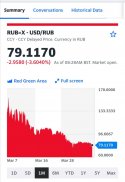Here are interesting articles by Justin Bronk, a British analyst of airpower.
"Getting Serious About SEAD: European Air Forces Must Learn from the Failure of the Russian Air Force over Ukraine"
"The failure of the Russian air force to gain and exploit air superiority over Ukraine has been a surprise for most air power professionals.
However, far from inspiring complacency, Russian failure should make Western air forces reflect honestly on how they would fare under
similar circumstances."
"The immediate lesson is that Russia’s failure and Ukraine’s inability to conduct successful suppression and/or destruction of enemy
air defences (SEAD/DEAD) operations has crippled the battlefield effectiveness of both air forces."
"Is the Russian Air Force Actually Incapable of Complex Air Operations?"
"One of the greatest surprises from the initial phase of the Russian invasion of Ukraine has been the inability of the Russian
Aerospace Forces (VKS) fighter and fighter-bomber fleets to establish air superiority, or to deploy significant combat power
in support of the under-performing Russian ground forces."
"Unlikely or Insufficient Potential Explanations
One potential argument is that the VKS fighter fleets are being held in reserve, potentially as a deterrent against direct intervention
by NATO forces. This is unlikely to be the case. If the VKS is capable of large-scale combat operations to rapidly establish air superiority
over Ukraine, by not doing so, it is, in fact, weakening its potential deterrent value against NATO forces rather than preserving it.
The failure of the much-feared Russian Army to rapidly overwhelm the much smaller and poorly positioned Ukrainian forces, and
its
and personnel, have already seriously damaged international perceptions of Russia’s conventional
military power. From a NATO deterrence standpoint, the Russian General Staff and the Kremlin have every incentive to employ their
airpower to maximum effect to re-establish some of this lost credibility.
Another argument has been that due to the relatively low proportion of the VKS fixed-wing fleet that can effectively employ
precision-guided munitions, large-scale strikes with unguided bombs and rockets were being avoided due to a desire to avoid
damaging critical infrastructure which Russia hopes to conquer and use, or from a desire to minimise Ukrainian civilian casualties.
This was a potentially valid assumption in the initial days of the invasion, when the Russian leadership was planning on a quick
military victory. However, as this possibility has rapidly faded and Russian forces have settled into a pattern of heavy artillery and
cruise missile bombardments against multiple encircled cities – most notably
and
– this theory no longer
explains the lack of large-scale VKS strikes.
Another theory is that Russian commanders are less willing to risk suffering heavy losses to their expensive and prestigious fast jets,
and so have held back the VKS due to low risk tolerance. This also does not make sense. Russian ground forces have lost hundreds
of modern tanks, armoured personnel carriers, short- and medium-range air-defence systems and thousands of troops including a
disproportionate number of elite paratroopers (VDV) and special forces in a week. The Russian economy is being rapidly choked by
crippling sanctions, and the Russian leadership has burned its carefully developed influence networks and alliances throughout Europe
and the wider world. In short, the Kremlin is risking everything – holding back the air force to avoid losses does not make sense in this
context.
The Only Currently Viable Explanation
While the early VKS failure to establish air superiority could be explained by lack of early warning, coordination capacity and
sufficient planning time, the continued pattern of activity suggests a more significant conclusion: that the VKS lacks the
institutional capacity to plan, brief and fly complex air operations at scale. There is significant circumstantial evidence to
support this, admittedly tentative, explanation."
"Russia has every incentive to establish air superiority, and on paper should be more than capable of doing so if it commits to
combat operations in large, mixed formations to suppress and hunt down Ukrainian fighters and SAM systems. Instead,
the VKS continues to only operate in very small numbers and at low level to minimise the threat from the Ukrainian SAMs."

